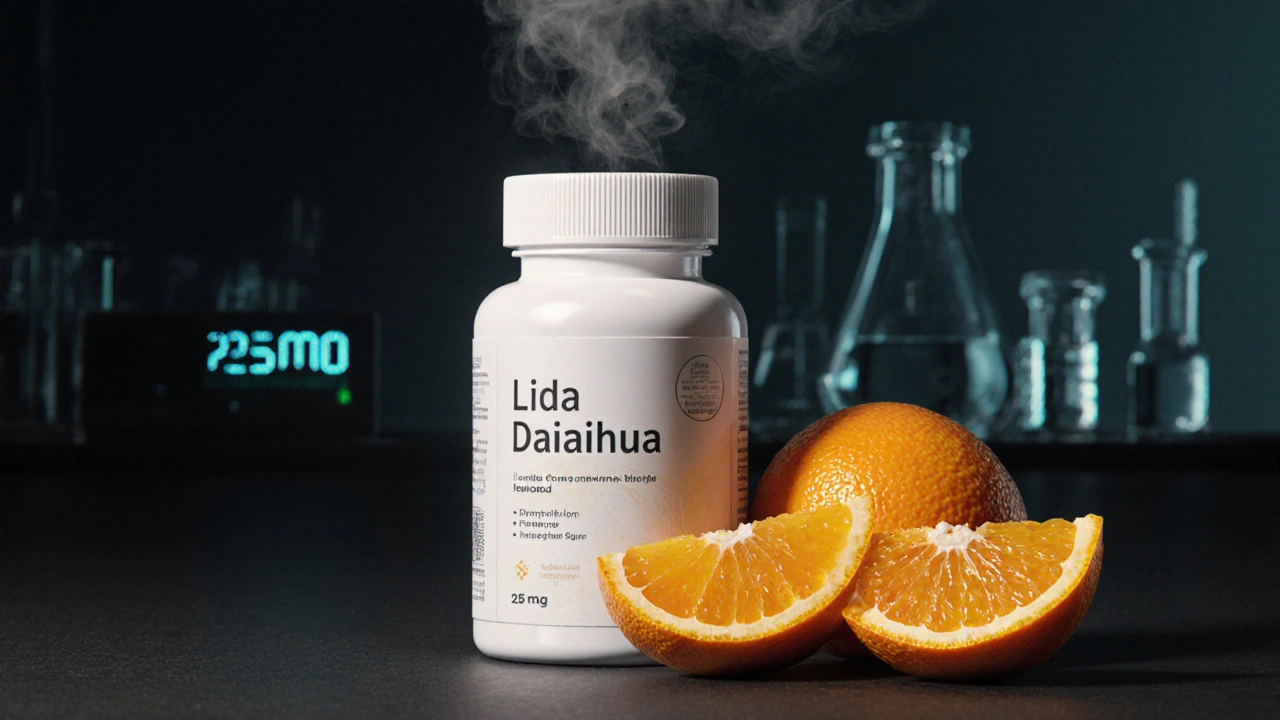Synephrine – What It Is, How It Works, and What to Watch For
When working with Synephrine, a naturally occurring alkaloid found in bitter orange (Citrus aurantium) that acts as a stimulant and appetite suppressant. Also known as p‑synephrine, it binds to adrenergic receptors to boost metabolism and increase energy expenditure. Here’s what you need to know about Synephrine before you consider it for any health goal.
Bitter orange, the fruit source of Synephrine, has been used in traditional medicine for centuries. Its peel contains the highest concentration of the alkaloid, and modern extracts aim to deliver a standardized dose. While the plant itself is safe in culinary amounts, the concentrated supplement form can deliver a much stronger physiological effect. This link between the fruit and the compound explains why many weight‑loss products market “natural” orange extracts even though the active ingredient behaves like a mild stimulant.
The action of Synephrine centers on the adrenergic receptor, specifically the beta‑3 subtype that influences fat breakdown. By activating these receptors, Synephrine can raise basal metabolic rate, modestly enhance calorie burn, and sometimes improve focus during workouts. However, the same pathway also touches heart rate and blood pressure, which is why safety discussions keep popping up.
Key Points About Synephrine
First, dosage matters. Most studies use 10‑50 mg per day, split into two doses. Going beyond that doesn’t necessarily increase fat loss but does raise the chance of side effects like jitteriness, headaches, or increased heart rhythm. Second, individual response varies. People with pre‑existing hypertension or heart conditions should be especially cautious and talk to a doctor before starting.
Third, the supplement market is a mixed bag. Some brands test for purity and label exact amounts, while others hide fillers or use unreliable sources. Look for third‑party testing labels such as USP or NSF to confirm you’re getting what the label promises.
Fourth, Synephrine isn’t a magic bullet. It works best when paired with a solid diet and regular exercise. Think of it as a modest metabolic boost rather than a standalone solution. Users who combine it with strength training often report better energy during sets and a slightly faster recovery.
Fifth, regulatory status differs by country. In the US, Synephrine is not an FDA‑approved drug but is allowed in dietary supplements. In some European nations, it faces stricter scrutiny and may be limited to lower concentrations.
Sixth, interactions are possible. Synephrine can amplify the effects of other stimulants like caffeine, yohimbine, or certain pre‑workout blends. Mixing them can push heart rate into an unsafe zone, so keep a close eye on total stimulant load.
Seventh, some research hints at modest appetite suppression, likely due to its stimulant nature and impact on blood sugar stability. People report feeling less hungry after a morning dose, which can help with calorie control.
Eighth, the long‑term safety profile remains under investigation. Most short‑term trials (up to 12 weeks) show no severe adverse events in healthy adults, but data on chronic use is limited. Until more evidence surfaces, many health professionals recommend using Synephrine only for short cycles.
Lastly, consider alternatives. If you’re uneasy about stimulant effects, other compounds like green tea extract (EGCG) or capsaicin can also modestly raise metabolism with a lower cardiovascular impact. We’ll cover several of these options in the articles below.
With this overview, you now have a clear picture of what Synephrine does, who might benefit, and what risks to watch for. Below you’ll find a curated collection of articles that dive deeper into specific health topics, from medication comparisons to lifestyle tips, all aimed at helping you make informed choices about your health and wellness.

Lida Daidaihua (Synephrine) vs. Common Alternatives: Which Thermogenic Wins?
A detailed comparison of Lida daidaihua (Synephrine) with common thermogenic alternatives, covering mechanisms, safety, legality, and best‑use scenarios for weight‑loss seekers.
Categories
- Medications (41)
- Health and Medicine (40)
- Health and Wellness (34)
- Online Pharmacy Guides (15)
- Nutrition and Supplements (7)
- Parenting and Family (3)
- Environment and Conservation (2)
- healthcare (1)
- prescription savings (1)
Popular Articles



